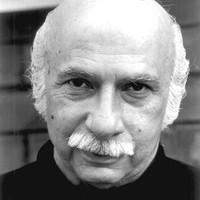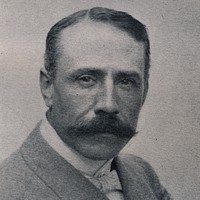Julie Albers Plays Elgar’s Cello Concerto



When the 29-year-old Franz Joseph Haydn began working for Austria’s royal Esterházy family in 1761, he was on the cusp of a career that would eventually transform the very fabric of music and make him the world’s most famous composer in the process. Until he took over as the head of the family’s musical operation in 1765, his main job in his assistant role was to organize concerts with the private orchestra, which numbered about 15 musicians. The symphonies he wrote in those early years were pivotal in defining a genre in its infancy, elaborating on the Italian habit of prefacing an opera with a three-part overture, or sinfonia in Italian.
Influences came from other directions too, as heard in the Symphony No. 22 that Haydn wrote in 1764. Instead of starting with a typical fast movement, this symphony takes after the tradition of Italian church sonatas dating back to the previous century, with a four-part plan that alternates between slow and fast movements. The instrumentation is also unprecedented, with English horns substituting for the usual oboes. English horns were a relatively recent invention, and despite the name they actually originated in the Austrian Empire.
This lower-pitched sibling of the oboe owes its name to the similarity in German between the words for “English” and “angelic,” and perhaps it was the original “angelic” association that inspired Haydn to place it in dialogue with the robust, earthbound horns in the first movement. Decades later, Haydn relayed a memory to his biographer of crafting an early symphony that was meant to represent “God speaking with an unrepentant sinner,” and a preeminent Haydn scholar hypothesized that this must have been the symphony in question. The dialectical nature of the first movement also earned it the nickname “The Philosopher,” a term that probably didn’t originate with Haydn but which has been in use since his lifetime.
After an unusually long and sobering first movement, the rest of the symphony livens things up with two thrilling prestos separated by a minuet, a French dance staple that Haydn fashioned into an indispensable component of the mature symphony.
Aaron Grad ©2024

Giya Kancheli came from the Soviet republic of Georgia, a territory wedged between Russia and Turkey along the Black Sea, and a site that has suffered wave after wave of political, religious and economic turmoil. He left in 1991 and eventually settled in Belgium, but his music never lost touch with the collective hope and heartbreak in his homeland. Support from the record label ECM played a large part in raising Kancheli’s international profile, including a release in 2000 featuring the Royal Flanders Philharmonic Orchestra in a performance of Magnum Ignotum from 1994, a work for wind ensemble and bass augmented with layers of pre-recorded tape. Kancheli wrote the following program note.
I am touched most by the mysterious spiritualization of the Georgian tradition of folk music. In my opinion, the masterworks of the many-voiced folk music could only have been created as a result of joint artistic effort by highly gifted people. The more I admire this unknown genius, the more I realize that I have no right to tamper with its creations. The material in Magnum Ignotum has been rendered in a very simple manner and serves only one purpose: to evoke a state of mind in which humbleness lodges itself in the soul in anticipation of divine singing. The tape consists of four parts: a chant by a high priest, an authentic recording from the thirties of a three-voiced improvisation by West Georgian greybeards, a mix of natural and artificial tone colors, and a Georgian hymn sung by the vocal ensemble Rustawi. All this music is full of that mysterious spirit that I shall never be able to grasp.
—Giya Kancheli
Aaron Grad ©2024

For 200 years following Henry Purcell’s death in 1695, the only significant music created in England was the work of foreigners, including George Frideric Handel, Johann Christian Bach and Franz Joseph Haydn. The man who broke England’s dry spell was an unlikely candidate — the son of a piano tuner, Catholic in a Protestant country, and untrained in music except for some violin lessons as a teenager. Edward Elgar gained international recognition with his intriguing Enigma Variations in 1899, and he helped forge a distinctly British sound in the waning years of the Romantic era.
In the wake of World War I, a traumatized Europe rejected the grand and sentimental statements of the past, and many of the older composers found themselves marginalized. Elgar, for his part, had one last burst of creative power left in him, and in 1918–19 he released four major compositions, all constructed in minor keys and traditional forms. Three looked back to the chamber music tradition of Johannes Brahms and Robert Schumann: the Violin Sonata in E Minor, the String Quartet in E Minor and the Piano Quintet in A Minor. The final product of this late surge was the Cello Concerto in E Minor, which Elgar conducted himself in October 1919 with the cellist Felix Salmond and the London Symphony Orchestra. Elgar’s wife died several months later, and the heartbroken composer fell silent for his remaining 14 years, producing no more major pieces.
The mood of the Cello Concerto matches the image of Elgar in his autumnal years: nostalgic, dignified, and uncompromising. The cello drops into a serious theme from the first downbeat, starting with three wide chords and continuing in a pensive recitative. The body of the movement pulses with a restrained tempo, providing a platform for expressive melodies and tasteful virtuosity that never overshadows the musical narrative.
Plucked versions of the same three chords provide the link to the second movement. After another free-flowing introduction, the material gathers itself into a light-stepping scherzo full of chattering bow strokes. The Adagio movement responds with endless melodic lines that whisper over a reduced orchestra and inch ever forward, the cello resting for only one measure. The final phrase lands on an unresolved harmony, and the orchestra provides the answer in the form of an agitated transition back to the home key. Another free-form introduction recalls the mood of the opening movement, and even the finale’s most spirited music cannot stave off the concerto’s urge to turn inward, with memories lingering of the three mysterious chords heard in earlier movements.
The British pianist and composer Iain Farrington created this arrangement that reduces the accompaniment down to a smaller chamber orchestra, allowing “smaller ensembles to perform the work with the full emotional impact without any loss of texture or color,” he writes on his website.
Aaron Grad ©2024
Get driving directions and find nearby parking.
Find dining options close to the venue.
View seating charts to find out where you'll be seating.
Get driving directions and find nearby parking.
Find dining options close to the venue.
View seating charts to find out where you'll be seating.
